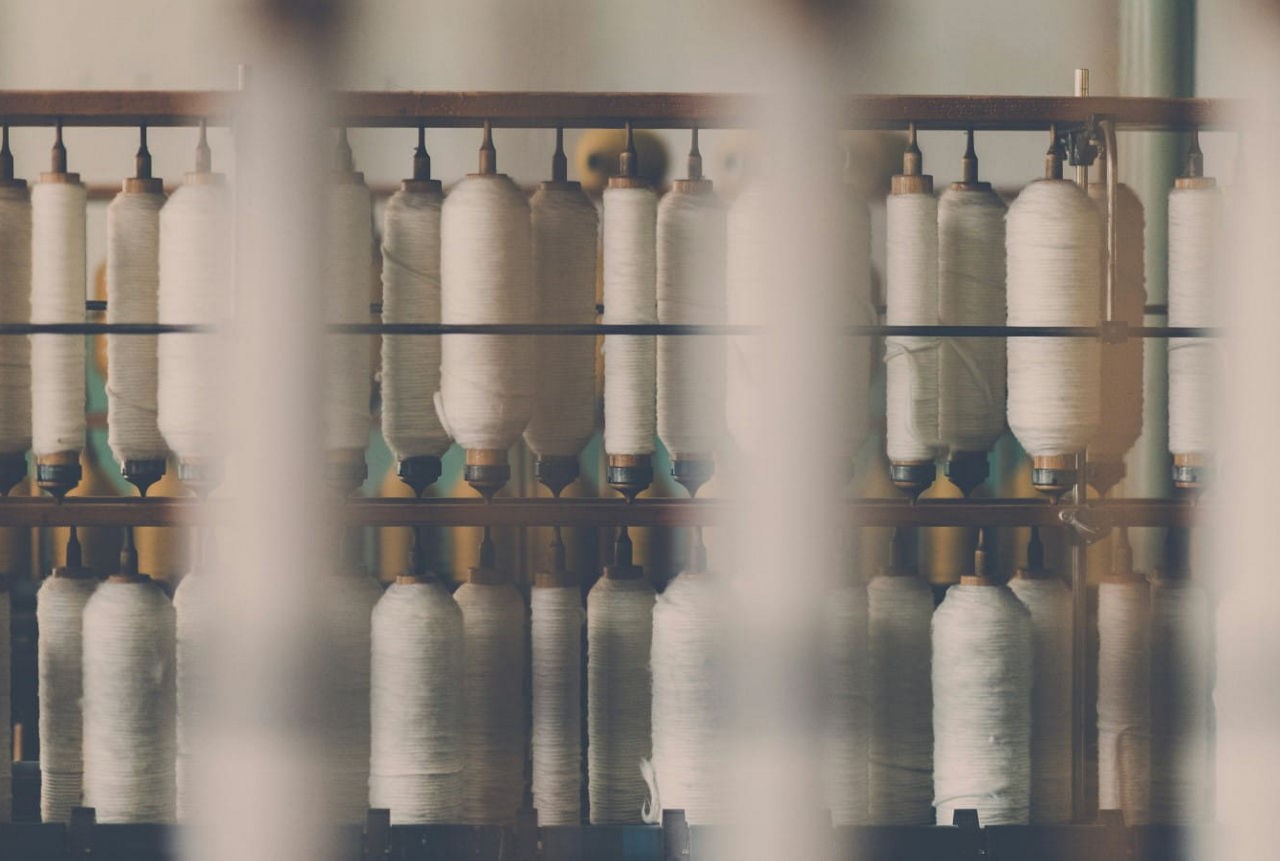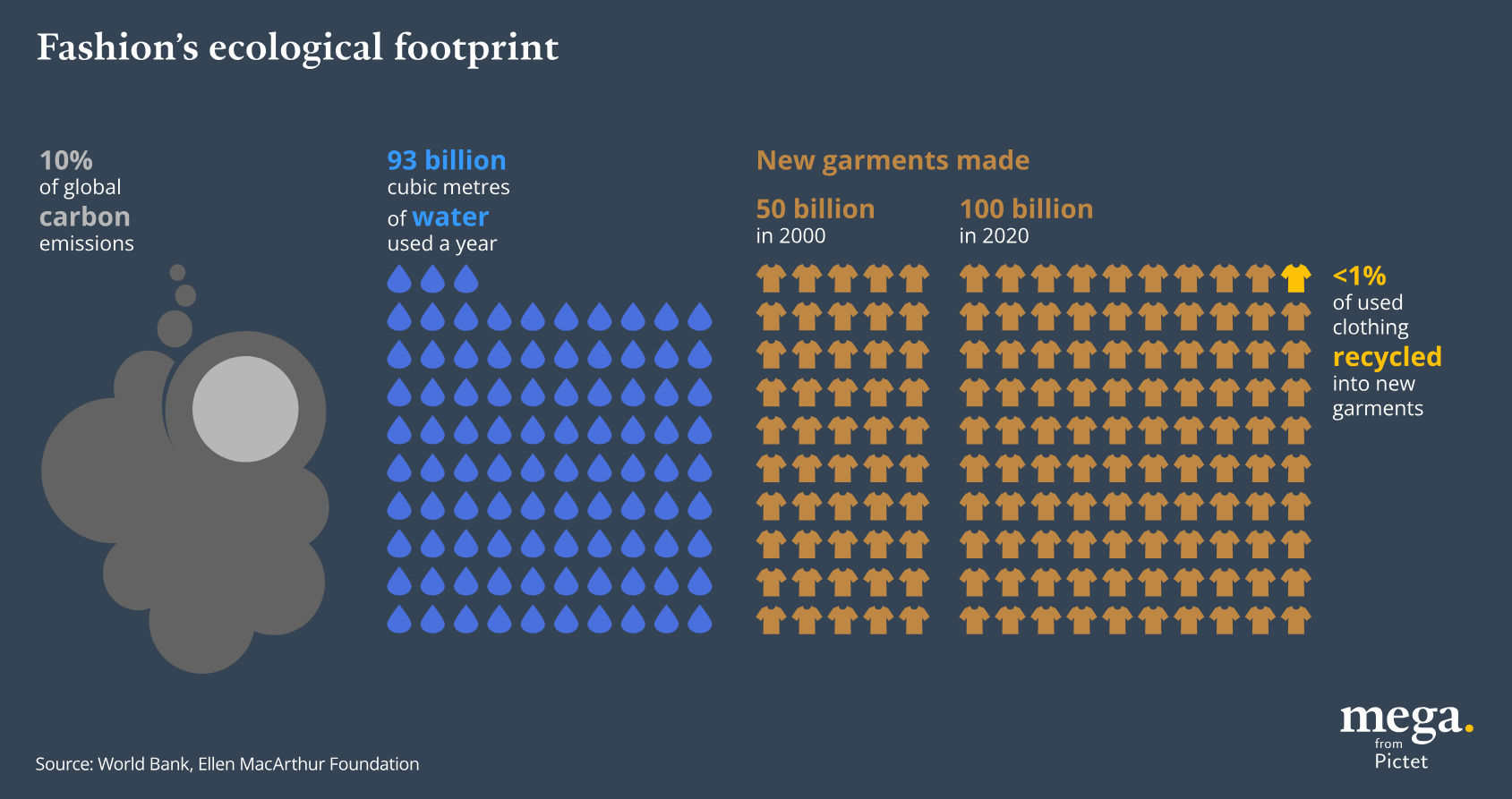Pictet Asset Management - Closing the loop in textile recycling
It is not possible to recycle most fabrics with current methods, meaning millions of tons of fast fashion clothes that are thrown away each year end up in landfill.

Fast fashion has always been predicated on the seasonal consumption – and discarding – of clothes. Each year, 100 billion new garments are produced. The fashion industry has an annual global carbon footprint that matches the European Union. While fast fashion continues to dominate consumer culture, recent years have seen exponential interest in alternative approaches to production.
The push for a circular economy is driving more businesses to create supply chains in which old products can loop back into the manufacturing stage. It is reported that a circular system could generate USD560 billion in economic opportunities through new business models [1]. As consumers become increasingly eco-conscious, circular supply chains can also benefit businesses through positive brand equity.
It is, however, a slow-moving industry. This is one reason why further innovation in chemical-recycling is much needed. According to Edwina Huang, an Australian-Chinese entrepreneur, most manufacturers require fabric with a particular weight (in grams per square metre) and a specific fibre. A process that shreds fabric and creates a mixed blend would not suffice. “We cannot change how the textile industry has been operating for hundreds of years. But what we can change is ourselves, by accommodating the existing infrastructure within the technology and tackling the fabric compounds,” says Huang.
Her Sydney-based start-up Phoenxt is one of a growing number of companies trying to turn fashion green. It has developed innovative chemical processes that successfully turn old garments into beautiful new textiles.

One of the problems is that it is not possible to recycle most fabrics with current methods, meaning millions of tons of clothes that are thrown away each year end up in landfill. Most are a blend of fibres (usually polyester-cotton) and textile recyclers were unable to salvage one fibre without damaging the other. Some designers were producing stylish "upcycled" clothing, but this remained a small-scale intervention in the face of the overwhelming scale of fashion waste. A lot of old fabric would be turned into material for products like wall insulation, stuffing or mops, which was ultimately a last-use option before being disposed of. “It was more downcycling, rather than recycling,” says Huang. “Considering the huge amount of annual textile waste, how can you turn this around unless you have a systematic process to channel this into a raw material again?”
For Huang, it presented a new challenge. She rallied a team of chemical engineers and polymer scientists and began to investigate, founding Phoenxt in 2019. The company has developed a chemical recycling process that can separate fibres and recycle them back into new fibre sources while maintaining the quality of the material. Old clothing goes in, new yarn comes out. The enterprise adds value by turning low- or no-value textile waste into raw recycled fibres, selling the finished product for about USD3 per kg.
“Eventually we want to do 150,000 tons per year, per plant, when we open more in different countries,” says Huang.
Summary: Transformation of discarded textiles into valuable resources presents a significant investment opportunity. As the demand for eco-friendly fashion continues to rise, New technology could revolutionize the industry. While the journey to scale may be slow, the potential rewards for early investors could be substantial.
[1] by UK-based Ellen MacArthur Foundation.
Important Information
This article is used for informational purposes only and does not constitute on Pictet Asset Management part, an offer to buy or sell solicitation or investment advice. It has been established on the basis of data, projections, forecasts, anticipations and hypothesis which are subjective. Its analysis and conclusions are the expression of an opinion, based on available data at a specific date. The effective evolution of the economic variables and values of the financial markets could be significantly different from the indications communicated in this document.
October 2024
Please note that these are the views of Mega,Pictet Asset Management and should not be interpreted as the views of RL360.